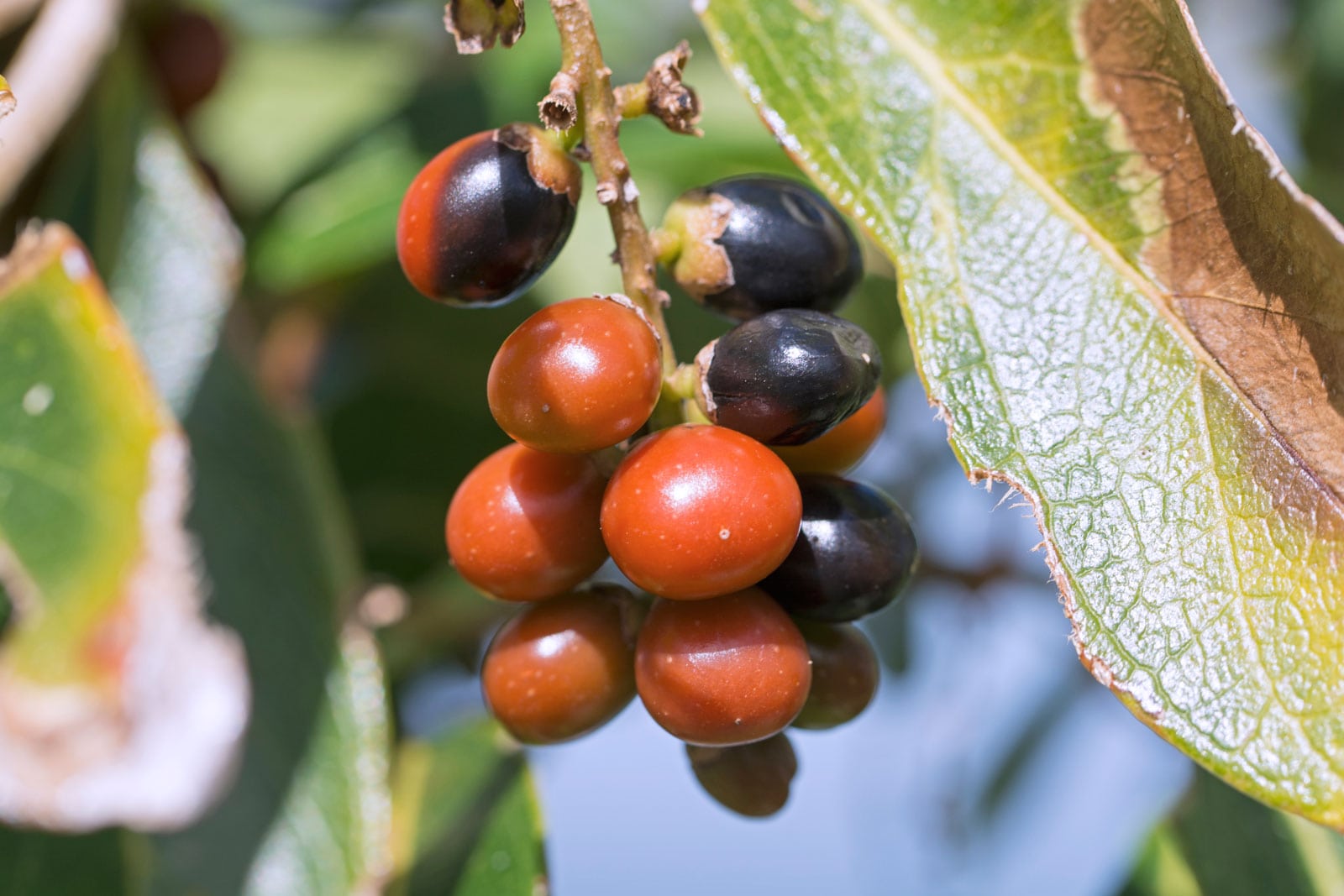Common Guavaberry Plant Uses: What To Do With Rumberries


Rumberries, also known as guavaberries, are native to the coastal areas of Central and South America and the Caribbean, including Jamaica, Cuba, Bermuda and the Virgin Islands. Although rumberries grow wild in these areas, they are also sometimes cultivated in home gardens. However, they're notoriously difficult to grow and generally don’t produce fruit for six to eight years. The berries are yellowish orange and extremely tart. However, they become sweeter as they ripen and turn deep purple or black. If you’re lucky enough to have access to a rumberry tree, you can use the blueberry sized berries in a number of ways. Wondering what to do with rumberries? Read on for a few ideas to pique your creativity.
Traditional Rumberry Uses
Guavaberry liquor is a popular drink in the West Indies, where the berries are strained and mixed with sugar and rum. The mixture is fermented and aged. In the Virgin Islands, rumberry punch is a traditional drink during the festive Christmas holidays.
Guavaberry Plant Uses in the Garden
Rumberry trees are attractive ornamentals that, in their native environment, can reach heights of 30 feet (8 m.) or more. Cultivated trees tend to be smaller and work well as shrubs or small trees. In the springtime, rumberry trees produce delicate white, tufted flowers that look like they’re sprinkled with snow. Beekeepers often grow the trees for the sweet nectar.
How to Use Rumberries
Rumberry recipes aren’t easy to find, but the berries can easily be substituted in nearly any recipe calling for blueberries, elderberries, currants, gooseberries, or other sweet-tart berries. Rumberry uses include liquors, smoothies, jams and jellies, as well as tarts, pies, and other desserts. Rumberry sauce is delicious served over ice cream or frozen yogurt. Store fresh rumberries in the refrigerator, where they’ll keep for several days.
Sign up for the Gardening Know How newsletter today and receive a free copy of our e-book "How to Grow Delicious Tomatoes".

A Credentialed Garden Writer, Mary H. Dyer was with Gardening Know How in the very beginning, publishing articles as early as 2007.